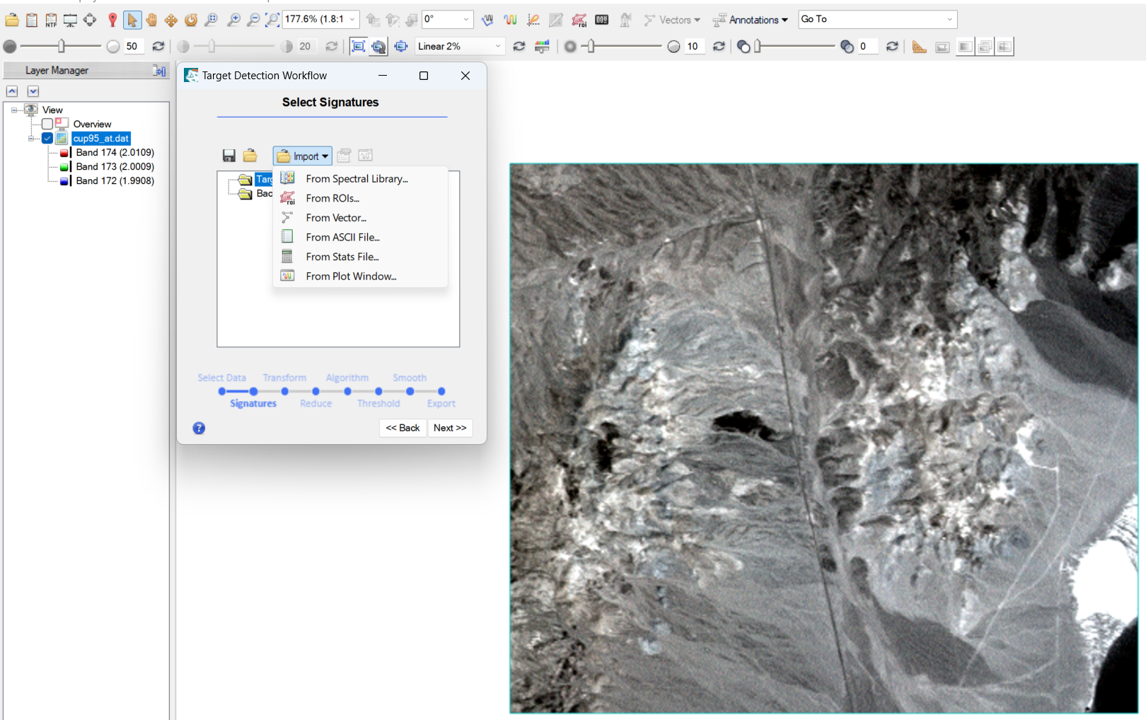
From military and surveillance applications to environmental monitoring and geological exploration, the Target Detection tool provides precise and efficient detection capabilities for identifying specific features of interest within your imagery.
Spotlight on Precision: Unveiling ENVI's Target Detection Tool
At the forefront of ENVI 6.0's prowess lies its Target Detection tool, empowering users to discern elusive signatures amidst spectral clutter. Harnessing sophisticated algorithms and machine learning techniques, ENVI identifies anomalous pixels, shedding light on concealed targets against complex backgrounds. From detecting environmental hazards in satellite imagery to uncovering archaeological relics buried beneath layers of earth, its applications span the spectrum of scientific inquiry and security domains.
The Power of Enhanced Algorithms: ENVI 6.0's target detection capabilities are driven by enhanced algorithms, leveraging the latest advancements in machine learning and deep learning to discern subtle patterns and anomalies within complex imagery.
Real-World Applications: From Urban planning to environmental monitoring and defense, ENVI’s target detection capabilities can be applied to facilitate infrastructure analysis, precisely detect changes in land cover and vegetation health, and aid in reconnaissance missions and surveillance activities to identify potential threats and anomalies.
Adaptive Thresholding: ENVI 6.0's adaptive thresholding algorithm intelligently adjusts detection thresholds based on local image characteristics, ensuring robust performance across diverse environmental conditions, from densely populated urban areas to remote wilderness regions.